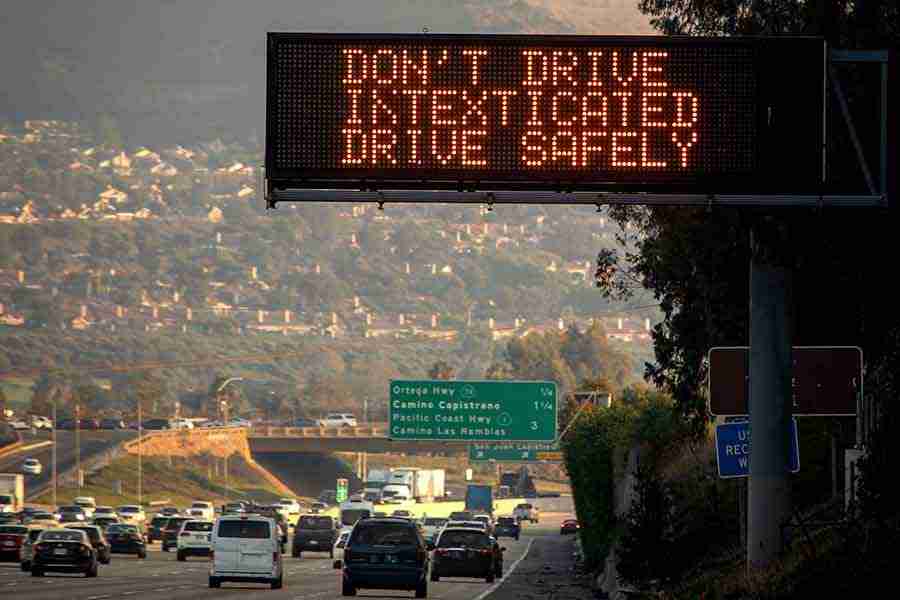We talk a lot about ways to save money on car insurance.
We’ve discussed:
- How where you live can make a big difference in what you pay.
- How sharing your driving habits through technology might save you a bunch.
- How strategically switching your car insurance carriers frequently could pay off in smaller premiums.
- How add-ons to your insurance can be an affordable path to better coverage.
- And, of course, how comparing insurance companies head-to-head can yield big savings on car insurance premiums.
But there’s one tried and true path to lower insurance rates that we’re going to address in this article:
Be a safer driver.
Being a safer driver means you’re less likely to cause an accident. And it also can mean that you won’t be a part of someone else’s accident, either.
But here’s a hard fact that you need to accept if this is going to work: You are not as safe as driver as you think you are. None of us is.
You can argue. You can deny. You can even secretly feel ashamed of your driving habits. But it’s true: when it comes to driving safely, almost every one of us has nowhere to go but up.
How can we be safer drivers?
As is the case with most deep and consequential questions, when we wanted the answer to the question “How can I be a safer driver?” we went to the place where all brutal truth lives.
That’s right. We went to Reddit. And we also took a side trip into official sites that back up the occasionally grumpy assertions that our friends on Reddit made about how to clean up your act behind the wheel.
So let’s go on our self-improvement journey. Here’s your quick course on driving hacks* that just might keep your car out of the body shop.
* Or, as they used to be called, safe driving habits.
1. “Put your [bleeping] phone down”
“I wish I could upvote this a hundred times. Don’t text, don’t browse the internet, don’t play Pokemon Go. If you have the ability to use hands free calling in your car do it, otherwise pull over or wait until you get where you’re going. I don’t care how well you think you handle texting and driving…you don’t. You’re not immortal. Treat yourself like the precious, breakable living thing that you are.”
“Ate pavement on the freeway yesterday because of a guy who couldn’t do this. My ribs and leg are wishing he’d heard this.”
“Put your [bleeping] phone down. The entire time.”
Turns out, leaving your phone in hands-free mode is excellent advice.
The Insurance Institute for Highway Safety has been following the trend of distracted driving for years. What they found isn’t surprising, but it is unnerving.
“People who use cellphones more frequently while driving may be riskier drivers in other respects. In an IIHS study of drivers who were continuously monitored for one year, the drivers who spent the greatest amount of their driving time interacting with a cellphone also had the highest rates of near crashes and crashes. In an on-road study, drivers who reported frequent cellphone use drove faster, changed lanes more often and made more hard braking maneuvers than drivers who said they rarely used cellphones while driving.”
In a recent IIHS survey of US drivers, over a fifth of respondents reported engaging in at least one smartphone-based distraction, such as making video calls, watching videos or using social media, on most or all of their trips.
2. Avoid tunnel vision. Always be scanning the conditions further down the road.
“Something I learned in driver’s Ed about a million years ago: don’t just pay attention to the car in front of you. Also pay attention to the car in front of them; this way, when you see brake lights you can prepare to stop even if the car in front of you doesn’t. It also warns you of giant potholes or other debris in the road. If you see the car up there swerve you can too.”
This is very good advice. And one of the tips from high school Driver’s Ed that really stuck with us. If you’re just watching the car in front of you, you’ll be missing all kinds of potential hazards a few more seconds down the road.
The driving instructors at Drive Safely often find themselves trying to break adult drivers of this bad habit:
“One of the first things I’d teach to my driving students was to look further ahead while driving. I wish more driving schools would focus on this. People don’t mean to, but it’s natural human instinct to look directly at the vehicle in front of us or right at the pavement lines. These habits are tough to break and most people never realize they are doing it!”
3. Understand that safe following distance is measured in time, not car-lengths.
Back to Reddit: “If you can’t count two seconds between when the car in front of you goes past a sign and when you go past that sign – you need to back off. Stopping suddenly takes longer than you’d think.”
A lot of us were taught to leave at least two seconds of distance between us and the car we are following. If it’s not at least two seconds, you’re too close.
In recent years, the estimate of the ideal time-gap has gotten longer. Here’s Smart Motorist on the three-second rule.
“Some experts consider a two-second distance to be the absolute minimum that you should allow but suggest that to be truly safe, you should apply the three-second rule instead. This means you allow an extra one second of distance on top of the two seconds to give yourself an extra margin of safety.
Whenever possible, we would advise following the three-second rule rather than the two-second rule. Being cautious won’t cost you anything since you will still be traveling at the same speed, but it may be the difference between having an accident and avoiding one.”
4. Don’t overcorrect your steering.
Sudden swerves often set off a cascading series of unwanted physics lessons. Yes, you missed that deer, but now your SUV is careening toward that ravine. So you swerve back, and, with that, you’ve practically guaranteed you’ll be upside down in a few seconds. In the heat of the moment, it’s difficult to remember, but you need to always be thinking about the effects of sudden moves on the stability of your ride.
Here’s one Reddit user’s explanation: “I’ve seen far more serious or fatal collisions from people swerving to miss a cat/dog/deer than from hitting the animal. People jerk the wheel, lose control, and go off the road into a tree or oncoming traffic.”
“If you aren’t paying attention and your wheels drift off the road, don’t jerk the steering wheel to get back on the road. Take your foot off the gas and do a gentle turn. Just maintain that gentle steer and you’ll come back onto the road.”
5. Assume the worst. Of everyone.
You’re rolling carefree down a stretch of road you know well. Your tunes are playing at a reasonable volume ant you aren’t speeding. And then — BANG! — just like that, you’re in the middle of an accident.
Again, Reddit has the answer: “Always assume everyone else is an idiot. In other words, drive defensively: assume the person with a signal left it on and they aren’t actually turning (or will change their mind) and don’t pull out in front of them; Assume somebody is going to run the red light, so even if it’s green take a quick glance left and right as you approach or before you go through; Assume that guy might merge into you and be prepared if he does (leave yourself an out).”
Progressive Insurance has a great guide to defensive driving techniques.
“Defensive driving means scanning everything in your line of vision, not just what’s right in front of you,” the Progressive guide says. “A van that’s two lanes over and 10 car lengths ahead may not seem like a threat, but if that van swerves into your lane to avoid hitting a deer, you’ll need to be ready to respond.”
6. “Use ur damn seatbelt”
That’s the entire comment on the Ask Reddit thread: “Use ur damn seatbelt.”
No need to say more. By now, we’ve all had the stats beaten into our brains: seatbelts save lives. According to the National Highway Traffic Safety Administration, half of all traffic deaths in 2021 were people who were not wearing seatbelts.
Or, to look at that fact more positively, more than 375,000 people lived through their crashes since 1975 because they were belted.
7. Resist the rage
There’s something about being in a car, surrounded by steel and safety features that can make some of us a little bit touchy about the behavior of other drivers. Maybe we want justice for that cut-off. Maybe we want to school them on the rules of the road at the next stoplight.
You’re going to want to resist this temptation, absolutely, if you want to be a safe driver.
The sages at Reddit address this, too:
“Don’t take things personally if someone passes you, cuts you off, or other road rage-y type driving. Just let it go and don’t feed into it, because you can’t reason with rage even if you are in the ‘right’ and they are in the wrong.”
Aggressive driving is extremely common among U.S. drivers. According to AAA Foundation for Traffic Safety’s 2019 data, nearly 80 percent of drivers expressed significant anger, aggression or road rage behind the wheel at least once in the previous 30 days.
Every single one of us (well, 80 percent of us) needs to take a deep breath and remember that it’s not worth a trip to the body shop. Or worse.
A few more tips before you hit the road
To wrap up, here are three particularly memorable and helpful safe driving ideas from the Ask Reddit thread:
- “When I start the car and before I put it in drive, I ask myself… Is this going to be the trip where I have an accident or get killed on the highway? It freaks me out a bit, and I’m on high alert while driving.”
- “Learn what the blind spot is. Stay out of other driver’s blind spots.”
- “Practice and experience EMERGENCY BRAKING in your car. Most people first experience this when it’s a real emergency. Have you done a full emergency stop before?”*
*Make sure you’re in a place where there is zero chance of encountering other vehicles when practicing emergency stops. Ideally, practice this with a professional driving instructor.
Driving safely is the best way to lower your insurance costs.


















